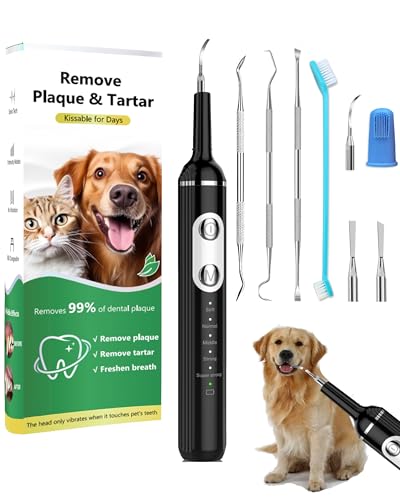




As a devoted pet owner, I often find myself puzzled by certain habits of my furry companion, especially those relating to their eating routines. It’s quite intriguing to observe how our beloved animals interact with their meals, sometimes exhibiting behaviors that leave us scratching our heads in bewilderment.
In this article, I will delve into some common scenarios that many pet owners, including myself, have experienced. By exploring these behaviors, we can uncover the underlying reasons and better understand what our cherished friends might be trying to communicate.
Exploring Feeding Patterns can reveal much about an animal’s health, emotional state, and preferences. By paying close attention to these patterns, I aim to offer insights that could help fellow pet owners create a more harmonious and understanding relationship with their four-legged family members.
Through a series of observations and expert insights, I hope to shed light on the various factors that influence our pets’ dining habits. Whether it’s a matter of comfort, health, or environment, understanding these elements is crucial in addressing and adapting to our pets’ needs effectively.
Common Behavioral Reasons for Food Scatter
Our furry companions can sometimes exhibit puzzling habits, and one such habit involves spreading their meals across various spots in the home. Understanding the underlying causes can help us better address these behaviors and create a more harmonious living environment.
Instinctual Drives
At the core, many behaviors stem from deeply ingrained instincts. For instance, in the wild, ancestors would often hide or spread their sustenance to protect it from scavengers. This instinct might still be active, leading to similar actions with their kibble or treats. This behavior can also serve as a natural way to manage resources and ensure they have access to nourishment later.
Anxiety and Stress
Another significant factor can be emotional well-being. Pets experiencing anxiety or stress may act out in various ways, including scattering their sustenance. Changes in environment, routine disruptions, or the presence of unfamiliar guests can trigger such actions. Addressing these emotional triggers is crucial to mitigating this behavior and ensuring our pets feel secure and content in their surroundings.
By recognizing and understanding these behavioral motives, we can take steps to create a more comfortable and reassuring environment for our furry friends, ultimately reducing the tendency to scatter their meals.
Health Issues That Cause Food Hoarding
When our furry friends start to exhibit unusual behavior with their meals, it can be concerning. In this section, I will explore potential health conditions that might be influencing this pattern. Understanding these issues is crucial for addressing the root cause and ensuring our pets remain healthy and happy.
Dental Problems: Pain or discomfort in the mouth can make eating difficult. Pets with sore gums, loose teeth, or other oral issues may stash their meals for later, avoiding immediate consumption due to the pain associated with chewing.
Gastrointestinal Disorders: Issues such as nausea, indigestion, or other digestive ailments can lead to irregular eating habits. Pets might hide their meals when they feel unwell, planning to eat once the discomfort subsides.
Neurological Conditions: Certain neurological disorders can alter an animal’s behavior, leading to compulsive actions like hoarding. These conditions can disrupt normal eating patterns and should be evaluated by a veterinarian.
Anxiety and Stress: Just like humans, pets can experience anxiety and stress, which can manifest in various behaviors, including the way they handle their meals. High stress levels might cause them to hide food as a coping mechanism.
Metabolic Diseases: Conditions affecting metabolism, such as thyroid imbalances or diabetes, can influence eating behavior. Pets with these conditions might not feel hungry at usual times, leading them to stash their food for when they feel more inclined to eat.
Recognizing these potential health issues is the first step toward helping our pets. If your pet is displaying such behaviors, consulting with a veterinarian is essential to diagnose and treat any underlying conditions. Addressing the health problem can significantly improve their eating habits and overall well-being.
Environmental Factors Influencing Eating Habits
In our quest to understand the peculiar eating patterns of our furry companions, it’s essential to consider various environmental elements that can play a significant role. These factors can shape their behavior, affecting how, when, and where they consume their meals. By examining these influences, we can gain a deeper understanding of their dietary habits and address any concerns that arise.
Household Dynamics
The dynamics within our homes, including the presence of other pets, children, and general household activity, can significantly impact our pets’ mealtime behavior. A bustling environment might make them feel uneasy or distracted, leading to irregular eating patterns. On the other hand, a calm and consistent setting can promote healthier and more predictable eating habits.
Feeding Area Setup
The location and setup of the feeding area can also influence eating behavior. Factors such as the placement of the bowl, the type of bowl used, and the cleanliness of the area all contribute to how comfortably our companions can eat. Ensuring a quiet, undisturbed spot can encourage them to focus on their meals, fostering a better eating routine.
| Environmental Factor | Potential Impact on Eating Habits |
|---|---|
| Household Noise Level | High noise levels can lead to anxiety, causing our pets to eat less or leave their meals unfinished. |
| Presence of Other Animals | Competition or intimidation from other pets might result in altered eating behaviors, such as hurried or guarded eating. |
| Feeding Area Location | A poorly chosen feeding spot, such as a high-traffic area, can make our pets feel insecure, leading to disrupted eating patterns. |
| Bowl Type and Cleanliness | Uncomfortable or dirty bowls can deter our pets from eating comfortably, impacting their overall food intake. |
By being mindful of these environmental aspects, we can create a more conducive eating environment for our pets. Small adjustments in the household dynamics and feeding area setup can significantly improve their eating experience and contribute to better health and well-being.
Training Tips to Prevent Food Mess
As a pet owner, I know how challenging it can be to manage meal times and maintain a tidy home. Our furry companions can sometimes develop habits that lead to disarray, especially during eating. Implementing specific training techniques can significantly reduce these issues, making meal times more pleasant for everyone involved.
Consistency is Key
Establishing a consistent routine is crucial. Pets thrive on predictability, and a regular feeding schedule can help mitigate disorderly behavior. Feeding your pet at the same time and in the same place daily creates a structured environment, which can reduce the likelihood of scattered remnants.
Positive Reinforcement
Rewarding good behavior is an effective method for teaching your pet proper mealtime manners. Whenever your pet eats neatly and remains focused on their dish, provide a treat or verbal praise. This reinforcement encourages them to repeat the desired behavior, gradually minimizing messiness.
Interactive Feeding Solutions
Using interactive feeders or puzzle toys can also promote neater eating habits. These tools engage your pet mentally and physically, slowing down their eating process and reducing the amount of scatter. It’s a fun and beneficial way to maintain order during meals.
Supervised Eating
Initially, supervising your pet while they eat can help you guide them towards cleaner habits. Gently correct any messy behavior and redirect them to their dish. Over time, with patience and consistency, your pet will learn to eat more tidily without constant supervision.
Clean-Up Routine
Implementing a quick clean-up routine after meals can also help manage mess. Immediately wiping up any spills or crumbs ensures that untidy eating doesn’t become a lasting issue. Keeping the feeding area clean reinforces good habits and creates a more pleasant environment.
By following these training tips, you can significantly reduce the mess associated with your pet’s mealtime, making it a more enjoyable experience for both you and your furry friend.







